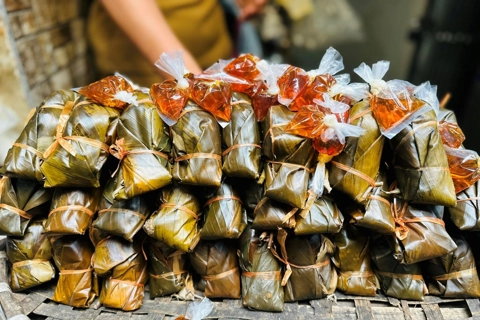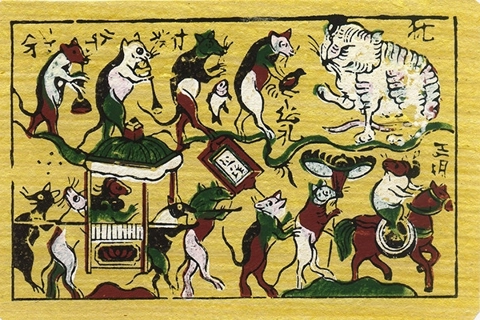Revealing the unknown: Heart of Bodhisattva Thich Quang Duc
The heart relic stands as a powerful symbol of Vietnam's deep-rooted traditions, embodying patriotism and a willingness to sacrifice for justice and peace.
THE HANOI TIMES — For the first time in history, the heart sarira of Bodhisattva Thich Quang Duc, a national treasure, is being publicly displayed after 34 years of storage at the State Bank of Vietnam.
It is offered for public veneration from May 5 to 10, then will be kept at the Vietnam Quoc Tu (National Pagoda) in Ho Chi Minh City.
Peace-loving monk
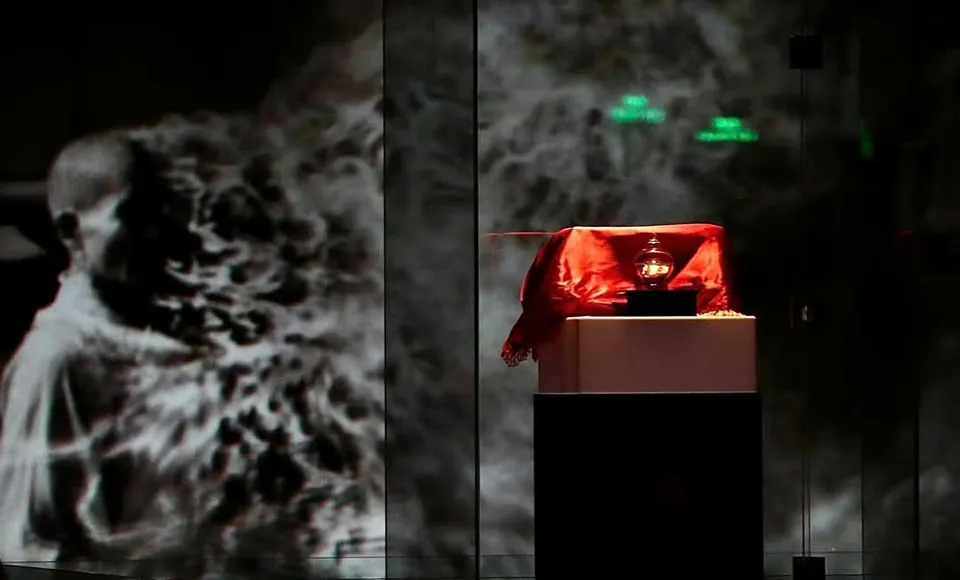
The faceless heart embodies the indomitable spirit and deep love of peace that define the Vietnamese people. Photo: Vesak 2025 Organizing Committee
The sarira reminds us of the venerable monk who committed self-immolation for good. At around 9:30 AM on June 11, 1963, at the intersection of Phan Dinh Phung Boulevard (now Nguyen Dinh Chieu Street) and Le Van Duyet Street (now Cach Mang Thang Tam Street) in Saigon's District 3, Monk Thich Quang Duc immolated himself in the presence of hundreds of Buddhist monks and nuns and civilians.
His body was engulfed in flames for nearly 15 minutes, a moment that not only stunned the pro-Catholic government of Ngo Dinh Diem, but also awakened the conscience of the world.
In a calm state of mind, sitting in the traditional meditation posture known as the "lotus position," Quang Duc committed self-immolation not as a hateful protest. Instead, he hoped to awaken the Diem's regime, demand respect for religious equality and freedom of belief, and protect Buddhism from ongoing harsh persecution.
The heart of Bodhisattva Thich Quang Duc transcended all laws of physics and became a sacred treasure of Vietnam, symbolizing the great vow, compassion, and courage of a merciful yet fearless Bodhisattva.
Born Lam Van Tuc in 1897 in the central province of Khanh Hoa, Thich Quang Duc followed Buddhism from childhood, meditating diligently and observing the precepts. For nearly 60 years, he was dedicated to spreading Buddhist teachings and saving lives. He also oversaw the construction of over 30 pagodas in the central coast and southern Vietnam.
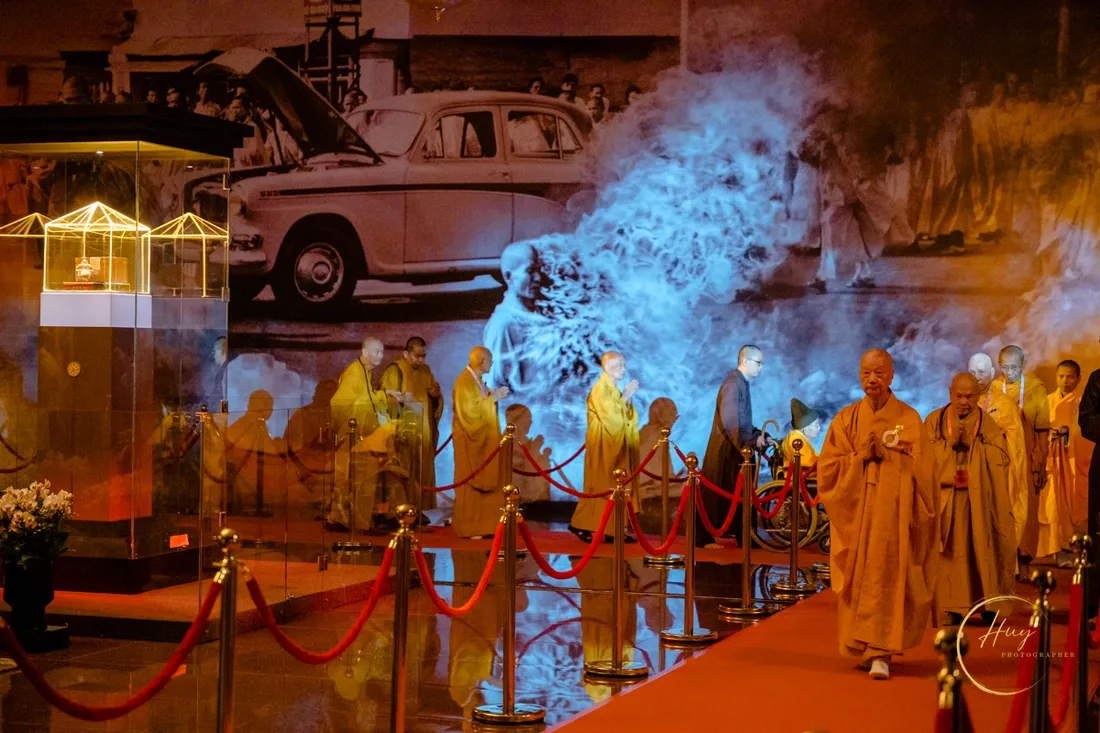
The heart sarira is carefully preserved under tight security from 1991 until early May 2025. Photo: Huy Dang
When Buddhist practices in Vietnam were severely repressed by the Ngo Dinh Diem regime, Thich Quang Duc chose to sacrifice his life to awaken its conscience, open the door to dialogue, and defend the nonviolent ideals of Buddhism.
Since 1963, the image and legacy of Bodhisattva Thich Quang Duc have served as a global symbol of nonviolent resistance.
The immortal heart
The self-immolation of Bodhisattva Thich Quang Duc not only shocked Saigon but also prompted the US government and the international community to exert tremendous pressure on the Diem regime.
Photographs of the self-immolation taken by journalist Malcolm Browne were published in international news outlets, including the New York Times, Time, and Life.
The fire from his body ignited a wave of protests against the Ngo Dinh Diem government's policy of suppressing Buddhism, fueling a series of nonviolent street marches across the country.

The ceremony in honor of the heart relic of Bodhisattva Thich Quang Duc is held with solemnity and deep reverence on May 6. Photo: Vesak 2025 Organizing Committee
At the funeral of Bodhisattva Thich Quang Duc, his body was cremated again, but his heart was said to be intact. Shortly after the cremation ceremony, the heart was enshrined in Xa Loi Pagoda, District 3, Ho Chi Minh City. The relic was then transferred to the Vietnam Quoc Tu until 1991, where it became an indestructible spiritual symbol revered by Buddhists nationwide.
According to Venerable Thich Le Trang, Head of the Executive Committee of the Vietnam Buddhist Sangha in Ho Chi Minh City, "His immortal heart is regarded as a symbol of compassion, profound understanding, boundless love, tolerance, and willingness to sacrifice for a higher cause."
National treasure
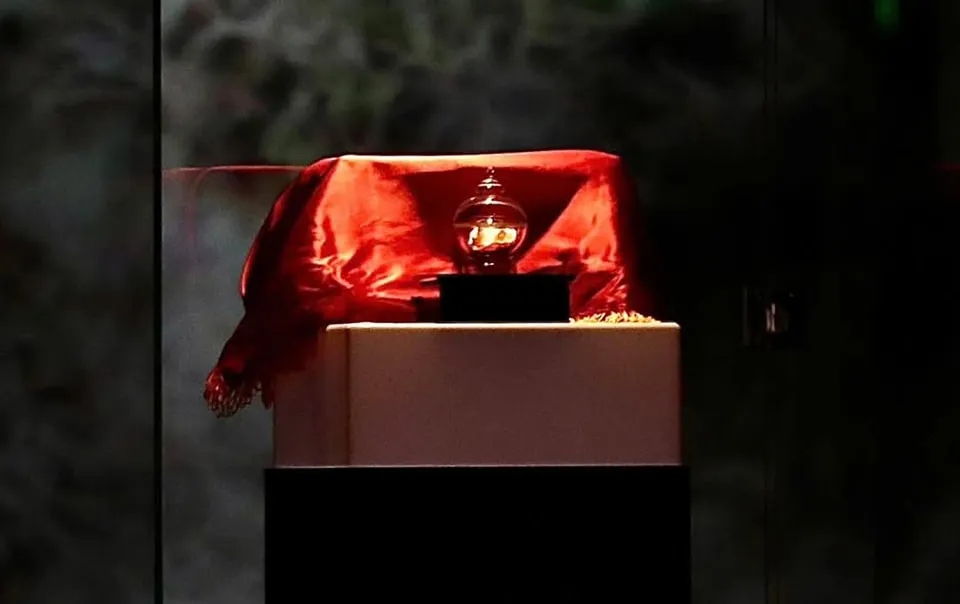
The heart sarira of Bodhisattva Thich Quang Duc is now on display at the Vietnam Quoc Tu in District 10, Ho Chi Minh City. Photo: Vesak 2025 Organizing Committee
On April 26, 1991, the heart relic of Bodhisattva Thich Quang Duc was handed over to the State Bank of Vietnam - Ho Chi Minh City Branch for safekeeping.
The heart of Bodhisattva Thich Quang Duc will be enshrined in the Vietnam Quoc Tu in District 10, Ho Chi Minh City. The solemn enshrinement of the relic at this time provides a unique opportunity for worship and highlights the values of compassion and immortality that Bodhisattva Thich Quang Duc has bequeathed to the history of Vietnam and humanity.








